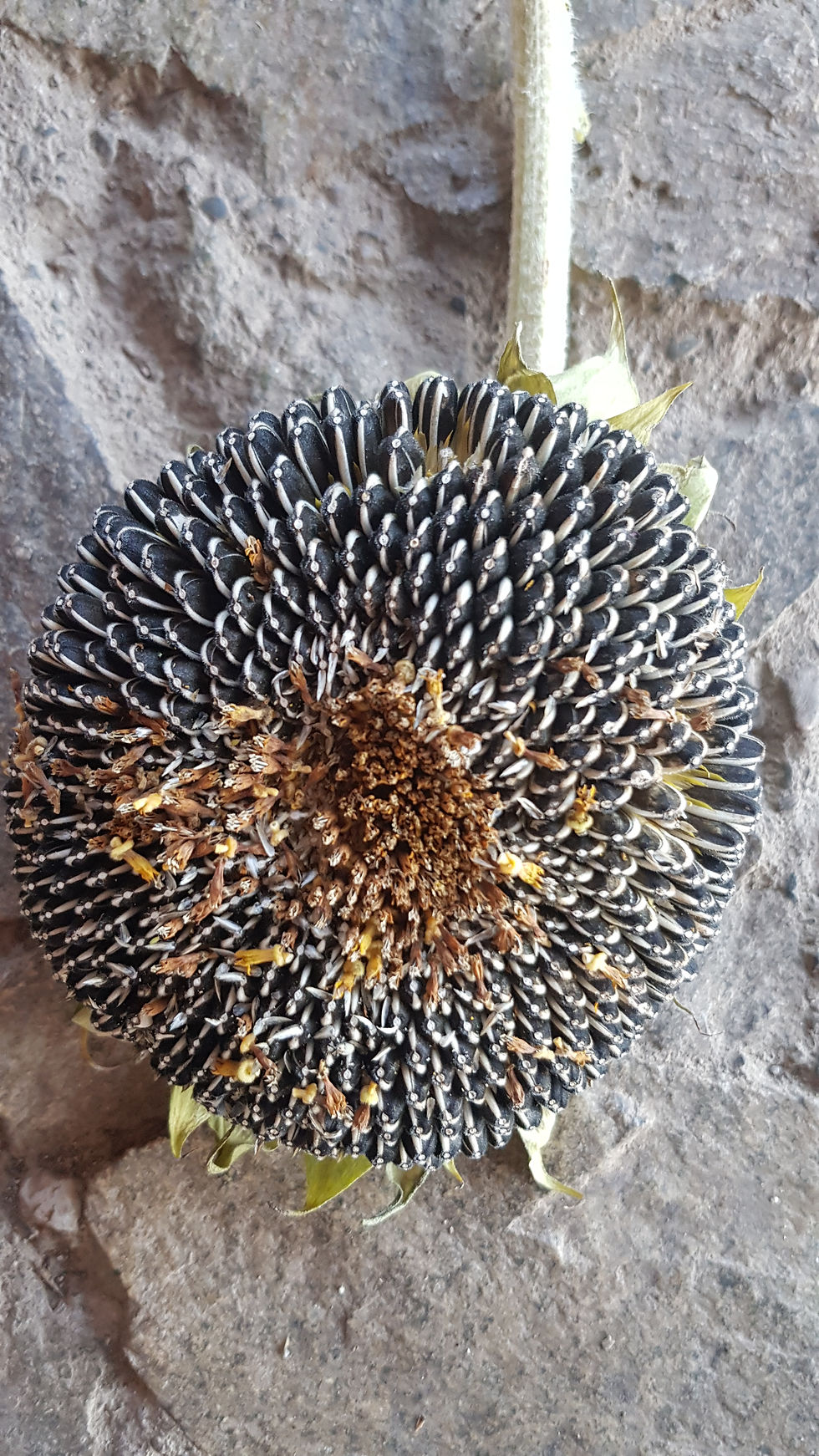Fibonacci sequence in sunflower
- Jasmina

- Oct 10, 2020
- 1 min read
Updated: Apr 20, 2021

The pair of numbers in this particular sunflower from my garden is 34 and 55 (spirals clockwise and counterclockwise).

The Fibonacci sequence is a series of numbers where each number in the sequence is the sum of the previous two numbers: 0, 1, 1, 2, 3, 5, 8, 13, 21, 34, 55, 89, 144, 233, 377, 610, …
Observing the spirals formed by the seed patterns within the sunflower one can find the Fibonacci sequence. In order to do that the spirals starting from the edge have to be counted clockwise and counterclockwise, often there can be found a pair of numbers from the sequence 34 and 55, 55 and 89 or even 89 and 144, in very large sunflowers (cf. Bohannon, 2017). This seed arrangement happens in many flowers. “The reason seems to be that this arrangement forms an optimal packing of the seeds so that, no matter how large the seed head, they are uniformly packed at any stage, all the seeds being the same size, no crowding in the centre and not too sparse at the edges” (Nott, 2013).
References:
Bohannon, J. (May. 17, 2016). Sunflowers show complex Fibonacci sequences. SCIENCE. Accessed from https://www.sciencemag.org/news/2016/05/sunflowers-show-complex-fibonacci-sequences
Nott, R. (November 4, 2013). The life and numbers of Fibonacci. Plus Magazine. Accessed from https://plus.maths.org/content/life-and-numbers-fibonacci

































Comments